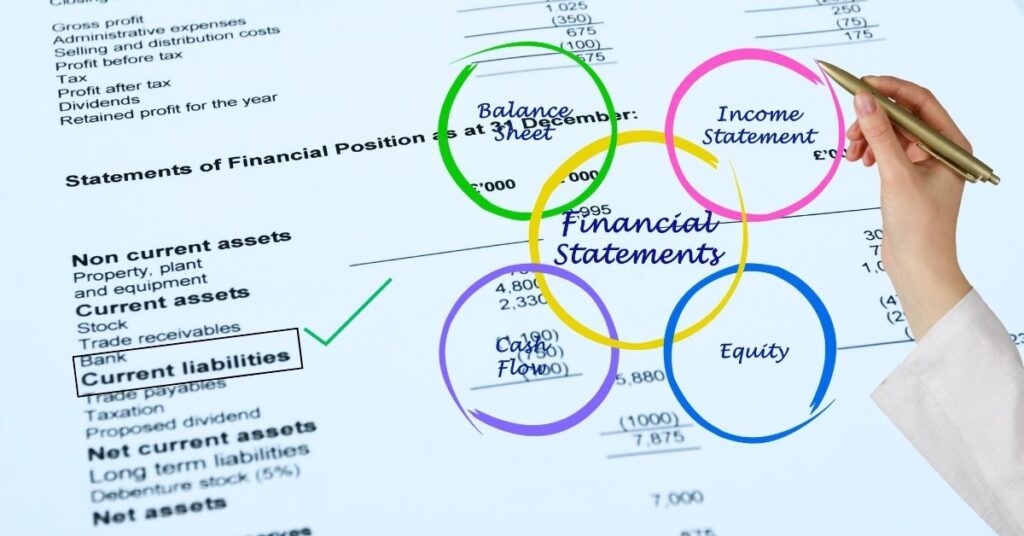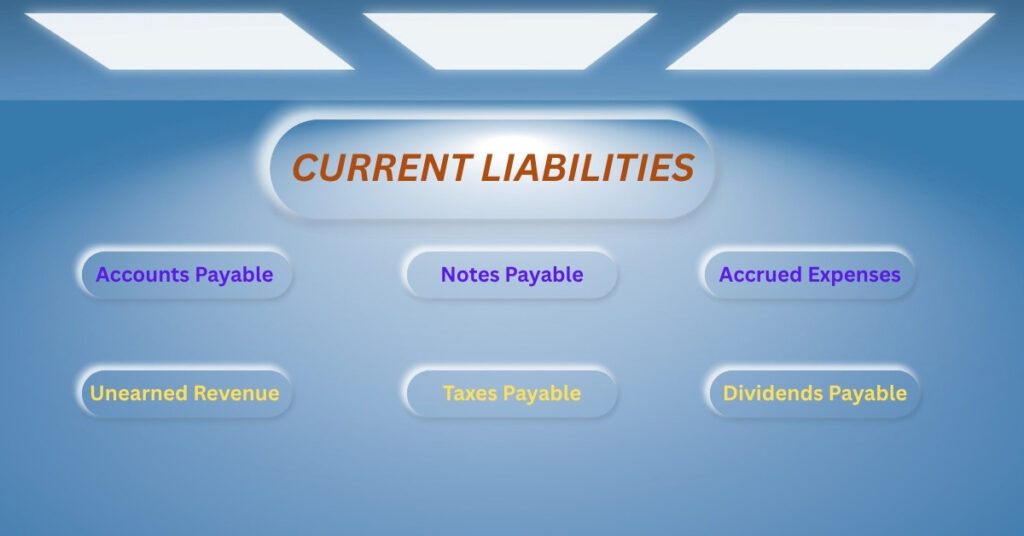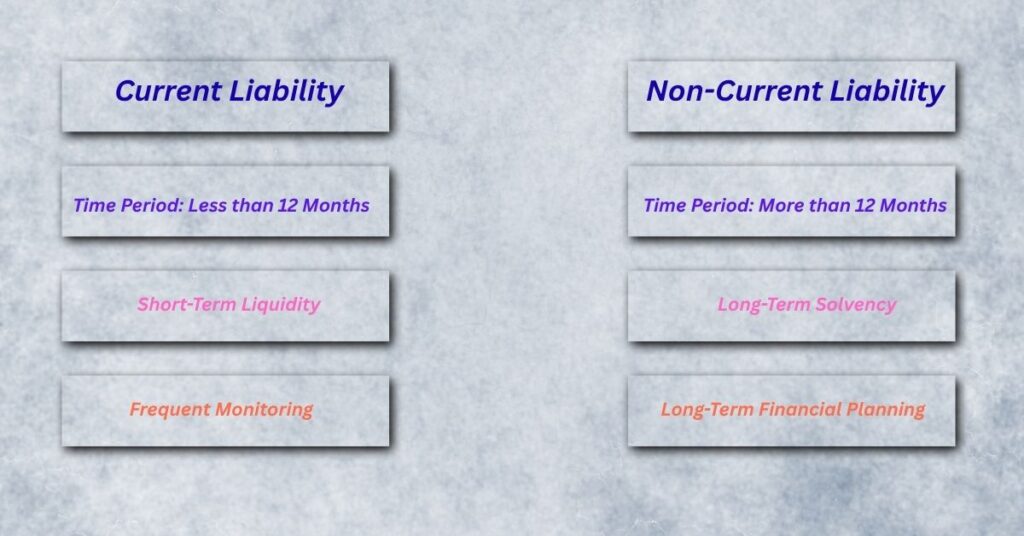What Are Current Liabilities And Why They Matter For Financial Success
In the world of business, a company’s financial position plays an important role in making informed business decisions. A company’s financial position has different elements, amongst them, current liabilities play a vital role in the short-term solvency and financial health of a company. Although you are the owner of a company, investor, accountant, or even student, in-depth learning of current liabilities is indispensable for evaluating the short-term operational efficiency and solvency of the company.
In this article, we will learn what current liabilities are, provide their examples, elaborate on their role in financial management, and discuss why they are very important for a company’s overall financial health.
What Are Current Liabilities?

Current liabilities are financial debts or obligations of a company, which are required to be paid off within twelve months or its operating cycle, whichever is longer. Typically, these obligations occur from routine operations of the business and consist of accounts payable, tax payable, accrued expenses, and other short-term loans obtained from any third party or financial institutions.
Stated that current liabilities indicate the short-term debts or obligations of the company that need to be paid off using current assets or through creating new liabilities of the company.
These liabilities are listed in the liabilities section of the balance sheet. Typically, these are in order of their due dates, from the most immediate liability to those due later within a year.
Common Types of Current Liabilities

A grasp of various types of current liabilities helps in analyzing a company’s short-term liquidity, operational, and financial health. Here are the most common types of current liabilities:
Accounts Payable
These are the amounts collected from suppliers or vendors for the goods and services they purchase on credit. It is the most common type of current liabilities and shows the company’s short-term commitments to its vendors or suppliers.
Short-Term Loans and Notes Payable
These liabilities consist of loans and promissory notes that are payable within one year. It can also include the lines of credit and short-term borrowing from financial institutions.
Accrued Expenses
These are the expenses that have been incurred but not yet paid. It consists of wages, interest payments, utility bills, and other operational costs consumed by a business or organization.
Taxes Payable
It is the amount of taxes that a company has to pay to the government within a year. Taxes payable include income tax, sales tax, and payroll tax.
Unearned Revenue
Money received in advance by the business for goods and services that have not yet been delivered or performed. So it represents liability; once the goods and services are delivered or rendered, it turns into revenue.
Current Portion of Long-Term Debt
If a business owes a long-term liability or loan and its maturity date is more than one year, a portion of that liability is classified as current liability that is due for payment in the current year.
Dividends Payable
Typically, a company’s net profit is divided into two sections, retained earnings and dividends. If a company declares that dividends are to be paid to its shareholders, the amount of dividends becomes a current liability for the company until paid.
Importance of Current Liabilities

Understanding of current liabilities is not just necessary for accountants and financial specialists but also crucial for stakeholders at all levels. Here are some key factors that why they critically important:
Measuring Liquidity
These are critical in evaluating the company’s ability to meet its short-term debts, called liquidity, or how the company is to pay its short-term debts. When these liabilities are compared with current assets, it determines whether a company is able to pay off its debts as they become due or not.
Key liquidity ratios include:
Current Ratio = Current Assets / Current Liabilities
Quick Ratio (Acid-Test Ratio) = (Current Assets – Inventory) / Current Liabilities
These ratios measure the overall company’s financial health, flexibility, and risk of insolvency for the short-term period.
Assessing Operational Efficiency
Operational efficiency is all about the utilization of resources with full accuracy. Companies that align their current liabilities well with their cash flows represent a well-run business. A company can delay payments to its vendors and collect quickly from customers is the best example of a well-run business because it can utilize the capital for other operations or investments.
Creditworthiness and Financial Risk
Particularly, lenders and investors closely evaluate the short-term solvency of a company when they decide to lend money or invest in the company. A company with excessive current liabilities than its current assets might face difficulties in meeting its obligations, indicating higher financial risk.
Cash Flow Management
Efficient management of current assets and liabilities enables a company to achieve its positive cash flows. Companies must plan effectively for their current source and resources to avoid liquidity crises, which can hamper business operations.
Strategic Decision-Making
Management mostly depends on current liabilities data to make short-term decisions like working capital management, budgeting, and spending. It also includes the planning for contingencies such as economic recession or downturn, which may restrict access to short-term sourcing.
Managing Current Liabilities
A strong strategy for managing current liabilities helps in avoiding financial distress. Here are a few strategies that help companies to manage them efficiently.
Timely Payment to Avoid Penalties
Timely payments of current liabilities help in maintaining good relationships with vendors and lenders, and interest and penalty charges.
Cash Flow Forecasting
Anticipating and monitoring the liabilities due periods for payments and maintaining sufficient cash to pay them off is the key to liquidity management.
Negotiating Favorable Payment Terms
Extending payment terms merely depends on good relationships with suppliers, giving companies more time to pay their liabilities, and improving cash flows without increasing further liabilities.
Monitoring Working Capital
Working capital (current assets minus current liabilities) plays an important role in current-period solvency, and it must be monitored with full attention. Negative working capital might bring liquidity challenges for a company.
Balancing Short-Term and Long-Term Debt
Sometimes companies convert their short-term liabilities into long-term liabilities if the interest rates are favourable, and it also releases short-term pressure.
Current Liabilities Vs. Non-Current Liabilities

The main distinction between current and non-current liabilities is the period in which they are to be paid. Current liabilities are those that are due within a year. In contrast, non-current liabilities are debts due after one year and consist of long-term loans, bonds payable, and pension obligations.
To learn about the main distinction between these two is important because:
- Short-term liabilities affect liquidity.
- Long-term liabilities affect the long-term solvency and capital structure of a company.
- Investors, lenders, and analysts thoroughly evaluate both liabilities to assess the company’s overall financial health and flexibility.
Potential Risks of Mismanaging Current Liabilities
Current liabilities are the part of day-to-day business operations, poor management of these liabilities can lead to serious challenges:
Liquidity Crisis: Liquidity refers to the ability of a company to pay short-term debts on their due dates. Inability to pay vendors and lenders can lead to the company’s default, legal action, or bankruptcy.
Damaged Reputation: Missed payments can damage the business relationships with vendors and lenders and cause a decrease in good reputation.
Reduced Creditworthiness: Once a company has reduced its good reputation, lenders may not offer new credit or offer unfavorable terms.
Operational Disruption: Maintaining cash flows is a big challenge for companies; problems may affect the purchasing of inventory or paying salaries and wages to employees.
Conclusion
Current liabilities are core components of a firm’s financial statements. The current liabilities are the obligations and debts of a firm that are due within one year. They are crucial for evaluating liquidity and short-term financial health, and the flexibility of a firm.
Knowledge and control of such liabilities guarantee efficient functioning of the company, enhance financial performance, and reduce the threat of insolvency. All the stakeholders rely on true and accurate information regarding current liabilities in making business decisions.
In a fluctuating business climate, where liquidity is a make-or-break factor for an enterprise, understanding the behavior of current liabilities is not merely good accounting; it is a savvy business.
Related Articles:
- Payroll Advance: Powerful Ways to Enhance Workplace Morale
- Current Assets Essentials: Elevate Your Financial Management Game
- Remote Payroll Jobs: Your Gateway to Flexibility and Financial Growth
- Powerful Mobile Marketing Strategies You Must Try
- Best Marketing Tools In An Advertising Plan
- Mastering Revenue Expenditure for Business Success
- Market Research And Its Importance: A Comprehensive Review
- What You Should Know? Notes Payable And Accounts Payable
- Digital Marketing And Strategies: A Comprehensive Review with Examples
- Are Annuities the Best Investment for a Bright Future? A Comprehensive Analysis
- Understanding Capital Expenditure: Definition, Significance, and Its Association in Financial Decision-Making
- Difference Between Accounting And Finance: A Proven Comprehensive Guide For Beginners
- Difference between Annuity due and Ordinary Annuity
- Essential Accounting Software for Small Enterprises
- 5 Best Software For Small Business Accounting







